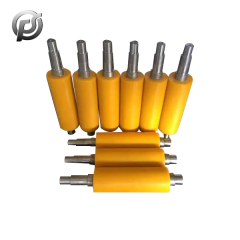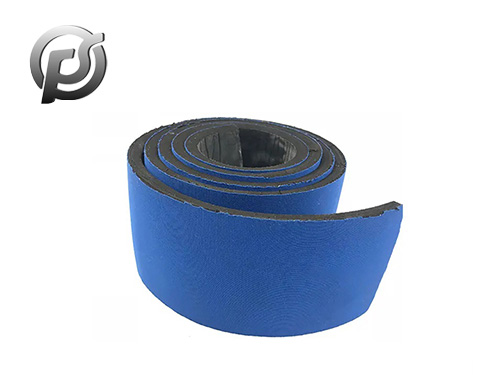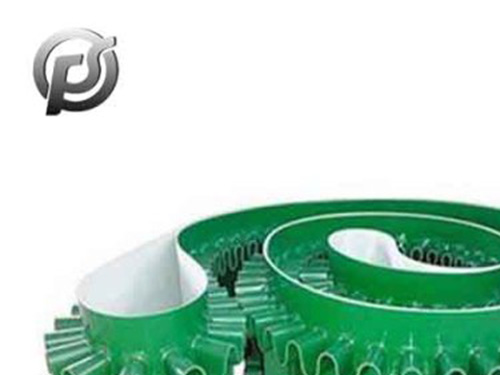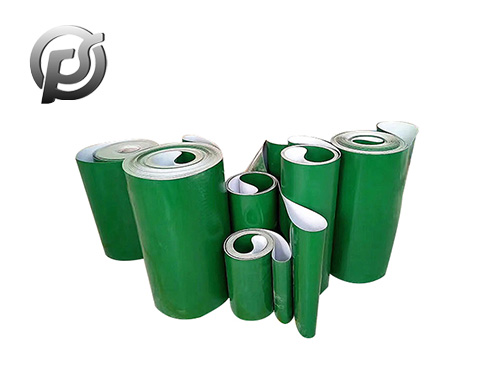Introduction:
Polyester conveyor belts have become indispensable in numerous industries, revolutionizing material handling and conveying processes. In this SEO-optimized article, we will delve into the advantages, applications, and maintenance tips for
polyester conveyor belts, highlighting their role in enhancing operational efficiency.
Polyester Conveyor Belts: A Versatile Solution for Material Handling
Advantages of Polyester Conveyor Belts
Polyester conveyor belts offer a multitude of advantages that make them a preferred choice in various industrial settings:
High Tensile Strength:
Polyester fibers, known for their exceptional tensile strength, provide robust support for heavy loads, ensuring reliable and efficient material transport.
Resistance to Moisture and Chemicals:
The inherent resistance of polyester to moisture and many chemicals makes these conveyor belts ideal for applications where exposure to liquids or corrosive substances is a concern.
Flexibility and Adaptability:
Polyester conveyor belts are highly flexible, allowing them to conform to different conveyor configurations. This flexibility simplifies installation and ensures smooth operation.
Cost-Effective Solution:
The cost-effectiveness of polyester conveyor belts, combined with their durability, makes them a financially prudent choice for industries seeking reliable and budget-friendly conveyor solutions.
Applications Across Industries
Polyester conveyor belts find applications across a spectrum of industries, including:
Mining and Aggregates:
Ideal for bulk material handling, polyester conveyor belts efficiently transport minerals, ores, and aggregates, contributing to streamlined mining operations.
Manufacturing and Production:
In manufacturing facilities, polyester conveyor belts facilitate the movement of raw materials and finished products, optimizing production processes.
Recycling and Waste Management:
Polyester's resistance to moisture makes these belts suitable for waste management and recycling facilities where materials may have variable moisture content.
Food Processing:
The hygienic properties of polyester make these conveyor belts suitable for the food industry, ensuring compliance with stringent hygiene standards.
Maintenance Tips for Longevity
To maximize the lifespan of polyester conveyor belts, consider the following maintenance tips:
Regular Cleaning:
Remove debris and contaminants from the conveyor belt surface regularly to prevent wear and tear.
Proper Tensioning:
Ensure correct tensioning of the belt to prevent slipping and reduce stress on the conveyor components.
Monitoring for Wear and Damage:
Periodically inspect the belt for signs of wear, fraying, or damage, addressing issues promptly to avoid downtime.
Temperature Considerations:
Be mindful of temperature extremes, as excessive heat or cold can impact the performance and longevity of polyester conveyor belts.
Conclusion
Polyester conveyor belts have emerged as a versatile and cost-effective solution for material handling in various industries. Their unique combination of strength, resistance, and flexibility makes them an ideal choice for optimizing operational processes. By understanding their advantages, applications, and implementing proper maintenance practices, industries can harness the full potential of polyester conveyor belts, ensuring efficient and reliable material transport in their operations.

 PE Conveyor Belts: Characteristics, Applications, and Advantages
PE Conveyor Belts: Characteristics, Applications, and Advantages
 Stone Conveyor Belt: Enhancing Efficiency and Productivity in Material Handling
Stone Conveyor Belt: Enhancing Efficiency and Productivity in Material Handling
 Optimizing Operations with PE Conveyor Belts: Durability, Efficiency, and Versatility
Optimizing Operations with PE Conveyor Belts: Durability, Efficiency, and Versatility